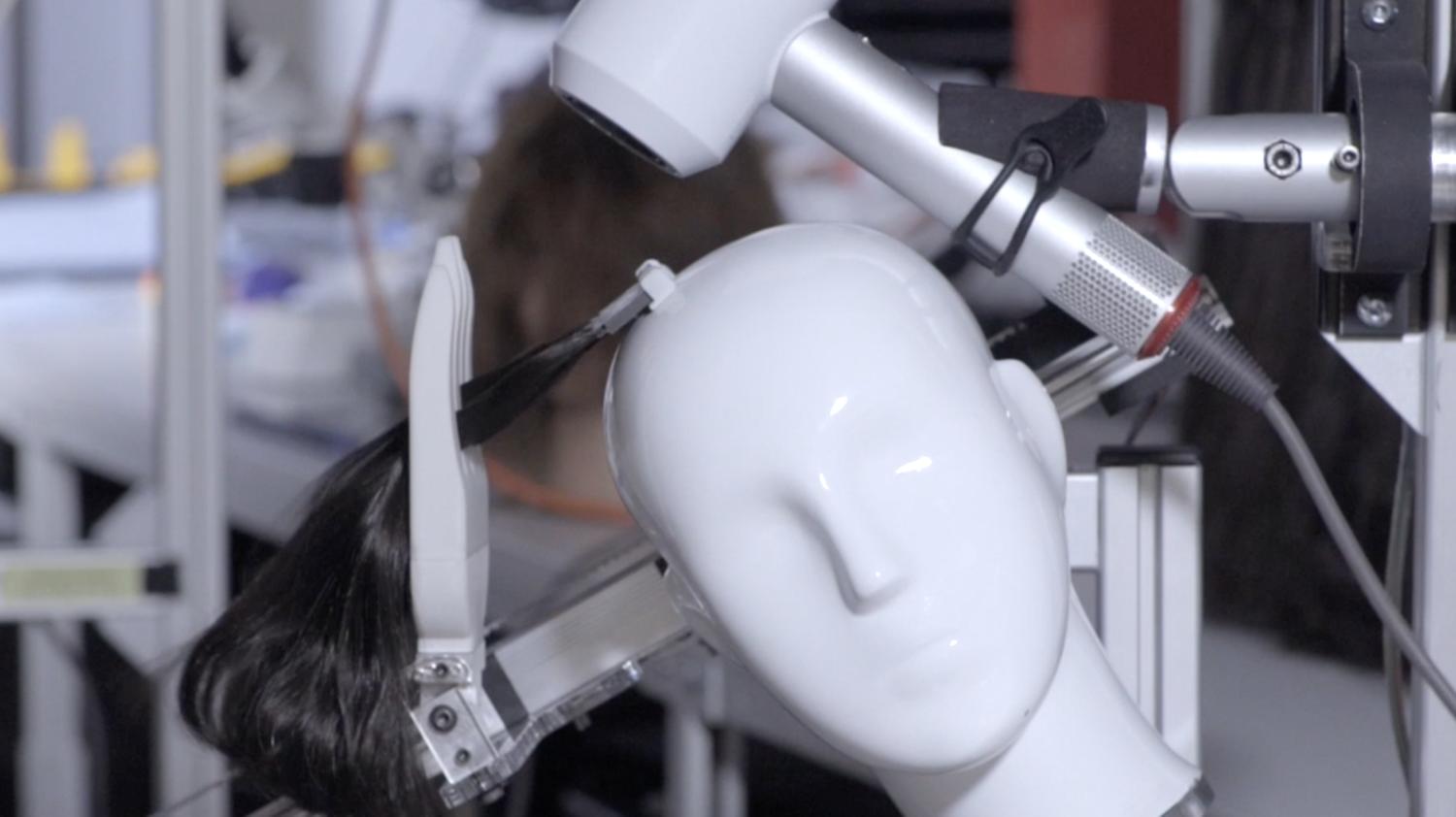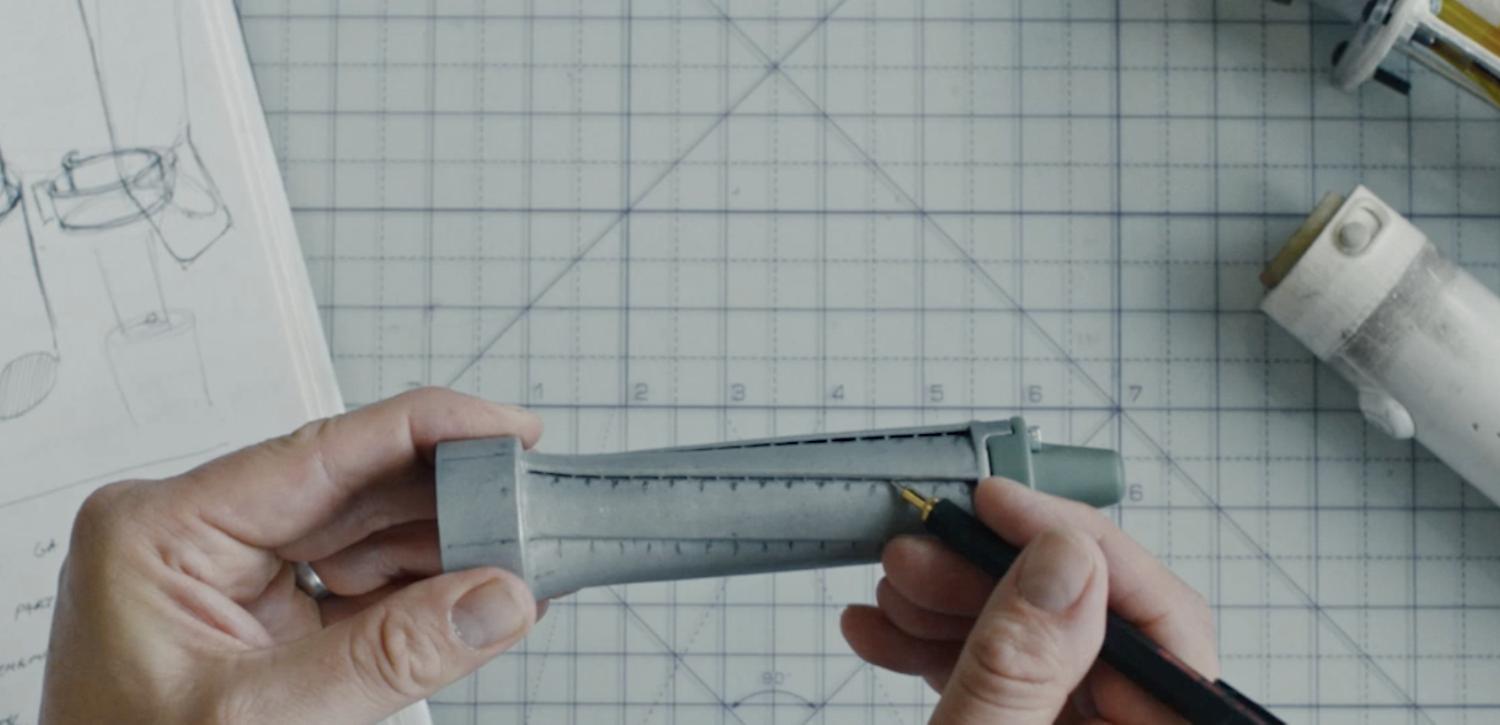

-
A love affair with airflow technology has been at the heart of Dyson’s engineering journey since the very beginning. Starting with the DC01 in 1993, airflow was at the core of Dyson vacuum cleaners within Dyson’s pioneering cyclonic technology. When expanding into fans and purifiers, Dyson engineered machines to multiply and project air further before adapting that understanding to design and develop the Dyson hair care range, which use airflow and lower temperatures to achieve the same styles, while maintaining hair health by reducing the reliance on heat. Airflow is a core part of Dyson’s DNA. In the words of James Dyson, “in order to fix it, you need a passionate anger about something that doesn't work well.” The Dyson story focuses on solving problems others ignore, reinventing the outdated and engineering the future – but airflow is a lasting romance.
Dyson Air Multiplier technology
It all began when Dyson engineers started looking into hair care back in 2012, investing £50 million into the development of Dyson’s first ever hair tool. Dyson engineers found that a powerful airflow could be achieved if air was taken into a motor and accelerated over an annular aperture – this is the iconic ring-shaped head that can only be recognised as Dyson’s first ever hair dryer, and in 2016, the Dyson Supersonic™ hair dryer was launched.
The traditional model and technology of the humble hair dryer had seen very little change since the 1960s. Traditional hair dryers often have a weak airflow and are powered by bulky motors, meaning they are slow at drying. To solve that problem, Dyson invented the Dyson digital motor V9, a motor which is up to eight times faster than conventional hair dryer motors, enabling the Dyson Supersonic™ hair dryer to move over 13 litres of air every second.
-

-
It took 25 variations of the annular aperture for Dyson engineers to fine-tune the balance between noise and performance. When engineers took James Dyson to the acoustic chamber to see the results of a pre-prototype rig, James believed the engineers had turned down the power of the machine to make it quieter. James put his hand in front of the air amplifier ring and was taken aback by the force of airflow. This soon became known as Dyson’s patented Air Multiplier™ technology.
-
Dyson Coanda technology
Just two years after the Dyson Supersonic™ hair dryer hit the shelves, Dyson revealed a new way to dry and style hair within one tool: the Dyson Airwrap™ styler. Launched in 2018, the engineering within the Dyson Airwrap™ styler once again adapted the format of traditional styling tools. The question on everyone’s lips was: how does the Dyson Airwrap™ styler curl hair with air? The answer: the Coanda effect.
What is the Coanda effect?
The Coanda effect is an aerodynamic phenomenon. Air, when propelled at the right speed and pressure, naturally follows an adjacent surface, pulling in the surrounding air. The Dyson Airwrap™ styler harnesses this phenomenon by creating a spinning vortex of air around the cylindrical shaped barrels of the tool. The barrels attract the hair through the airflow, encouraging hair to wrap itself around the barrel and curling it through the use of the air vortex.
-
It took approximately 500 prototypes to perfect the curling barrels featured on the Dyson Airwrap™ styler. The first two initial development rigs for the Dyson Airwrap™ styler came as a pair. Dyson engineers created them side by side and the two rigs were not to be separated, leading those working on them to name the two rigs Barbie and Ken after the popular fashion doll couple – a fitting detail for Dyson fans celebrating Valentine’s Day this year.
-
Press contacts
-
Liv Thomas
-




